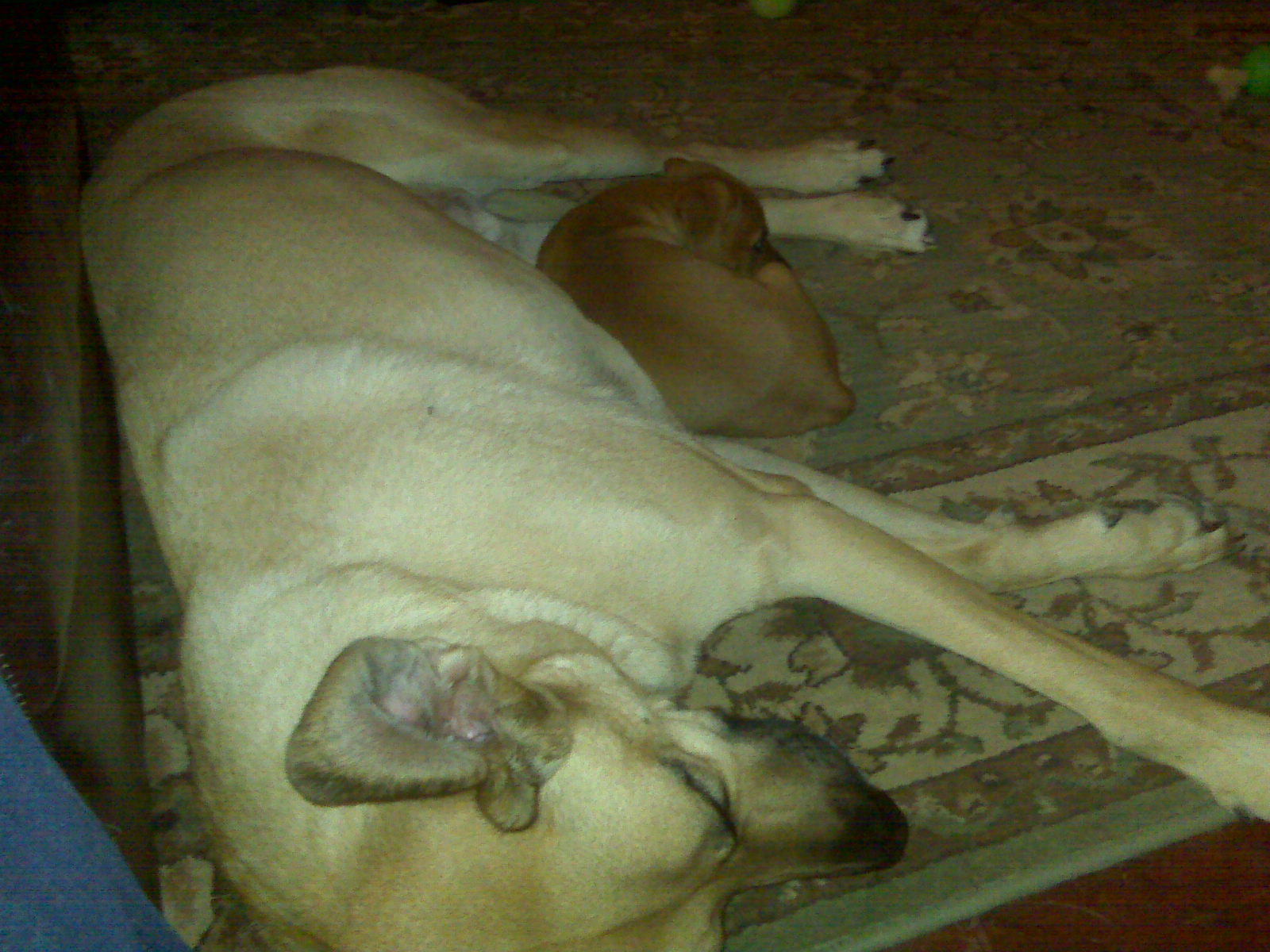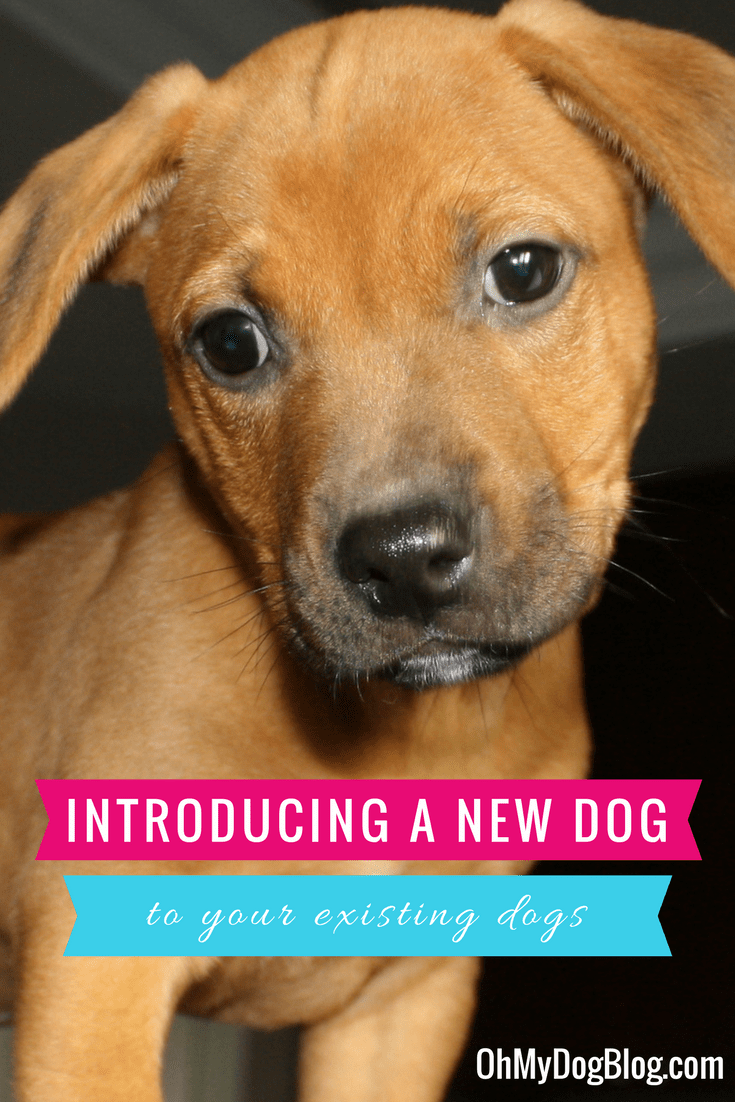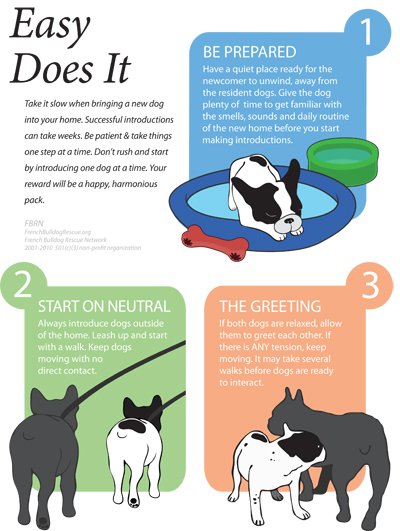Introducing a new dog to your home can be exciting and challenging. Your current dogs may feel uncertain about the new addition.
Successfully integrating a new adopted dog into your home requires careful planning and patience. Dogs are social animals, but they can be territorial. Bringing a new dog into the mix can upset the balance. It’s important to manage introductions properly to ensure a smooth transition.
Creating a positive first impression is key. This will help build a harmonious relationship between your pets. In this guide, we will explore practical steps and tips. These will help you introduce your new dog to your existing dogs with ease. Follow along to make this process stress-free and enjoyable for everyone.

Credit: ohmydogblog.com
Preparation Before The Introduction
Introducing a new adopted dog to your existing dogs can be stressful. Proper preparation can make the process smoother. Start by gathering supplies and setting up separate spaces for each dog. This ensures a safe and comfortable environment for all pets involved.
Gather Supplies
Before the introduction, gather all the necessary supplies. This helps create a calm atmosphere.
- Leashes: Have leashes ready for controlled interactions.
- Collars: Ensure each dog has a secure collar with ID tags.
- Treats: Use treats to reward good behavior.
- Toys: Provide toys to keep the dogs engaged and distracted.
- Water Bowls: Have separate water bowls to prevent resource guarding.
- Crates: Crates provide a safe space for each dog.
Set Up Separate Spaces
Creating separate spaces for each dog is crucial. It allows them to feel secure.
Follow these steps to set up the spaces:
- Choose Rooms: Select different rooms for each dog.
- Place Crates: Put crates in each room for safety.
- Provide Essentials: Include water bowls, bedding, and toys in each space.
- Use Baby Gates: Install baby gates to separate areas without isolating them completely.
- Ensure Visibility: Allow the dogs to see each other without direct contact.
These preparations help reduce stress and create a positive environment. Taking these steps ensures a smoother introduction for your new and existing dogs.

Credit: ohmydogblog.com
First Meeting Setup
Introducing a new adopted dog to your existing dogs can be challenging. The first meeting setup is crucial to ensure a smooth transition. A well-planned introduction helps to prevent conflicts and stress.
Neutral Territory
Choose a neutral location for the first meeting. A park or a friend’s yard works well. This prevents territorial behavior from your existing dogs. Keep both dogs on a leash and let them sniff around. Walk them parallel with some distance between them. Gradually decrease the distance if they seem calm.
Controlled Environment
After a successful neutral territory meeting, move to a controlled environment. Use a fenced area or a spacious room at home. Remove any toys, food, or beds that could cause possessiveness. Allow the dogs to interact off-leash while you supervise. Watch their body language closely. Positive behaviors include relaxed postures and wagging tails.
Interrupt any signs of aggression immediately. Separate the dogs and give them a break. Repeat the process until they show consistent positive interactions. Patience is key during this phase.
Initial Interaction
Introducing a new adopted dog to your existing dogs requires careful planning. The initial interaction sets the tone for their relationship. It can help avoid conflicts and ensure a smooth transition.
On-leash Introduction
For the first meeting, it’s best to keep both dogs on-leash. This ensures control and safety. Choose a neutral location, like a quiet park. Avoid your home or yard to prevent territorial behavior. Walk the dogs side by side with some distance. Let them sniff the air and get used to each other’s presence. Gradually reduce the distance if they seem calm.
Observe Body Language
Watch both dogs closely. Their body language can tell you a lot. Look for signs of relaxation, such as wagging tails or relaxed ears. Signs of stress include stiff bodies, growling, or showing teeth. If you see stress signs, increase the distance between them. Give them time to calm down. Don’t rush the process. Patience is key.
If both dogs remain calm, allow a brief nose-to-nose sniff. Keep the leashes loose but be ready to intervene. Reward positive behavior with treats and praise. This reinforces that good things happen when they are calm around each other.

Credit: frenchbulldogrescue.us
Gradual Familiarization
Introducing a new adopted dog to your existing dogs can be a challenging task. To ensure a smooth transition, gradual familiarization is key. This involves taking small, measured steps to get your dogs used to each other.
Short Sessions
Start with short sessions of interaction. The first meeting should be brief. Keep it under 10 minutes. Observe their body language. If they seem stressed, separate them.
Repeat these short sessions several times a day. Each session can be a bit longer. Slowly increase the duration as they grow more comfortable.
Positive Reinforcement
Use positive reinforcement during these interactions. Offer treats and praise when they show good behavior. This helps them associate each other with positive experiences.
Reward both dogs for calm behavior. Make sure to have treats ready. Use a happy, encouraging tone. This will reinforce good interactions.
Consistency is key. Repeat this process daily. Over time, they will build a positive relationship.
Monitoring Progress
Monitoring progress is crucial when introducing a new adopted dog to your existing dogs. It helps ensure a smooth transition and a peaceful household. Here are some key points to keep in mind during this phase.
Watch For Signs Of Stress
Observe both dogs closely. Look for signs of stress, such as hiding, growling, or avoiding each other. These signs indicate that one or both dogs feel uncomfortable. Address these behaviors early to prevent escalation.
Pay attention to body language. Raised fur, stiff posture, or excessive panting can signal distress. If you notice these signs, separate the dogs and give them a break.
Adjustments As Needed
Be flexible with your approach. Each dog is unique and may need different strategies. If the dogs seem stressed, try shorter introductions. Gradually increase the time they spend together.
Consider using positive reinforcement. Reward both dogs for calm behavior with treats or praise. This creates positive associations and can help ease tension.
If necessary, consult a professional. A dog trainer or behaviorist can provide additional guidance. They can help create a tailored plan for your dogs.
Supervised Playtime
Introducing a new adopted dog to existing dogs requires patience and a controlled environment. Start with separate spaces and gradually allow supervised playtime. Positive reinforcement and calm behavior help ensure a smooth transition.
Introducing a new adopted dog to your existing dogs can be a delicate process. Supervised playtime can help them bond. It ensures they get along without any issues. Always keep an eye on their interactions. This helps prevent any aggressive behavior.
Interactive Toys
Use interactive toys to engage both dogs. Toys keep them focused and entertained. They also help reduce tension. Choose toys that both dogs can share. Avoid toys that might cause competition. Puzzle toys work well. They challenge their minds and keep them busy.
Controlled Off-leash Time
After some successful play sessions, try controlled off-leash time. Allow both dogs to interact freely. But stay close to intervene if needed. Start with short periods. Gradually increase the time as they get comfortable. This helps build trust between the dogs. Always monitor their body language.
“`
Establishing Routine
Introducing a new adopted dog to your existing pets can be a delicate process. Establishing a routine helps both the new and existing dogs feel secure. Predictable schedules create a sense of normalcy, easing the transition.
Routines reduce stress and foster a peaceful environment. They help dogs understand what to expect, making them feel safe and comfortable. Let’s break down the key aspects of establishing a routine.
Feeding Schedule
Feeding time is crucial for dogs. Keep a consistent schedule. Feed your dogs at the same times each day. Ensure each dog has its own bowl to avoid conflicts. Supervise meal times initially. Observe their behavior and adjust if needed.
A consistent feeding schedule helps dogs feel secure. They know when to expect food, reducing anxiety. It also aids in digestion and overall health.
Shared Activities
Shared activities build bonds between your dogs. Walk them together. Play games that involve both dogs. Supervised play sessions help them understand each other. Keep the activities fun and positive.
These activities create positive associations. They learn to enjoy each other’s company. Over time, this fosters a strong bond. Always monitor their interactions to ensure safety. Gradually increase the time they spend together.
Building Long-term Harmony
Introducing a new adopted dog to your existing dogs can be challenging. But with patience, you can build long-term harmony in your home. This involves consistent training, understanding dog behavior, and seeking professional help if needed.
Consistent Training
Consistent training helps your dogs understand their roles. Use simple commands and reward positive behavior. This reinforces good habits. Create a daily routine for both dogs. It helps them feel secure.
- Set specific times for feeding.
- Have regular playtime and exercise.
- Ensure each dog has its own space.
Training sessions should be short and enjoyable. Avoid long, stressful sessions. Use treats and praise to encourage good behavior. Consistency is key to building long-term harmony.
Professional Help If Necessary
Sometimes, you may need professional help. A dog trainer can provide personalized advice. They can help with specific issues like aggression or anxiety.
| Signs You Need Professional Help | Potential Solutions |
|---|---|
| Frequent fights | Behavioral training |
| Excessive barking | Obedience classes |
| Severe anxiety | Therapy sessions |
Consulting a vet is also a good idea. They can rule out any medical issues. Professional help can make a big difference. It ensures your dogs live in harmony.
Frequently Asked Questions
How To Introduce A New Dog To Existing Dogs?
Introduce them in neutral territory to avoid territorial behavior. Keep both dogs on leashes. Allow them to sniff each other.
What Is The Best Way To Introduce Two Dogs?
Supervise the first meeting closely. Keep it short and positive. Use treats to encourage good behavior.
How Long Does It Take For Dogs To Get Along?
It varies. Some dogs bond immediately, while others may take weeks. Be patient and consistent.
Can I Leave New And Existing Dogs Alone?
No, never leave them alone initially. Supervise all interactions until you are confident they get along.
Introducing a new dog to existing ones takes patience and care. Always supervise their interactions. Gradually increase their time together. Reward good behavior with treats and praise. Ensure each dog has its own space. Consistency in routine helps reduce stress.
Watch for signs of aggression or discomfort. Seek professional help if needed. Building a harmonious dog household is possible. With love and effort, your dogs can become great friends. Enjoy the journey of blending your furry family.